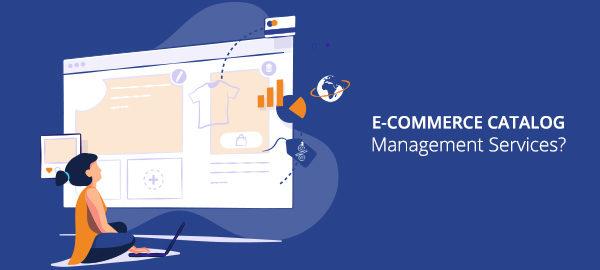Cloud-based
Want to access your catalog from any device that is connected to the Internet? If yes, use a cloud-based catalog management tool.
Cloud-based software is a web-based tool that requires only an Internet connection to operate. All your catalog-related information is available on the cloud. This means any Internet-enabled device will allow you to access your ecommerce catalog stored at the backend.
Cloud-based Catalog management software system provides the flexibility and convenience to connect with your device as long as you are using an Internet-enabled device.
Your catalog is available on the vendor's server which can be accessed via a web browser.
With a cloud-based catalog management tool, capital expenses are the bare minimum; it is priced under a monthly subscription, thereby making it an extremely affordable option.
On-Premise
If you have the budget and are ready to invest in IT infrastructure, choose the on-premise Catalog management tool to handle your Ecommerce custom catalog.
An on-premise environment is definitely not for start-ups that are on a measly budget. From server setup to website design to deployment, you have to handle everything in on-premise catalog management tools.
The initial capital and maintenance can make a deep hole into your pocket. One large investment upfront is commonly associated with on-premise version.
You have to pay heavy upfront license fees. Hence on-premise catalog-maker tools are advised for well-established large companies.
One of the biggest advantages of on-premise versions is that you get your own fully customized solutions. You have complete control over your catalog data since your catalog data is not in the hands of the third-party provider.
Also, in an on-premise environment, the server is hosted in-house in the office premises, thereby providing greater security to catalog data.
Open Source Software
Open-source software will give you complete control over how you can design your catalog as you have access to source code.
Open-source applications give you the freedom to modify the source code, which means you can manipulate the software and add new features as per business needs.
The ability to change source code is one of the biggest advantages of open source catalog management software.
However, in order to use the open-source catalog management system, it is imperative that you have a good understanding of programming. Simply put, if you are not aware of coding, you will have to hire developers which can increase the cost of managing the catalog.
Mobile App
Did you ever think that you could edit your product description using mobile phones? Well, the answer lies in using mobile apps.
There are mobile apps that will allow you to manage your catalog on the go. Simply download these apps on your smartphones and you are ready to handle your catalog management activities on the run.
When you use these mobile apps, you can handle all your catalog-related activities anytime anywhere.
Mobile apps for catalog management is simply an easy-to-use mobile application that will boost the efficiency and productivity of your organization. You have total control over your catalog through your smartphones or any mobile devices. No depending on laptops for catalog management.
Conclusion
On the whole, when you have very limited financial resources, choosing a cloud-based catalog management solution is the best option. It completely eliminates the need to manage your web hosting. Moreover, it provides a low-cost way to manage your Aggregated product catalog.
When you have a small or midsize company, it is advised to use cloud-based software to manage the catalog. Apart from lower upfront cost, a web-based catalog management tool assures easy access which can work wonders for your business.
With a cloud-based tool, you can handle your catalog management activities from anywhere as long as you are connected to the Internet. Use your Internet-enabled tablets to edit catalog content. No need to use office PCs to handle your day-to-day catalog management activities.
From cheaper upfront cost to no hardware investment, web-based catalog management tools have been the number one choice to keep a track of catalog related tasks. Another advantage is that it takes very little time to implement the software.
On the other hand, on-premise deployments are very tedious and time-consuming, hence not suitable for startups.
Overall, whether it is catalog creation or management, you need to choose a software tool that allows you to do your tasks efficiently irrespective of time and location.













No Comments